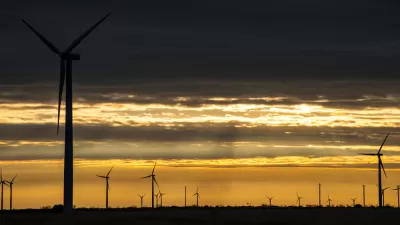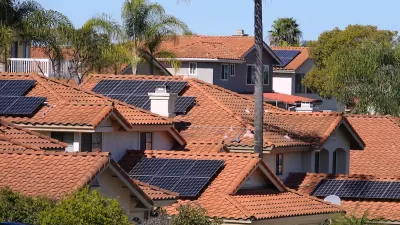The Obama-era American Recovery and Reinvestment Act of 2009 funded clean energy and created jobs during the Great Recession. Will clean energy be considered in a future stimulus bill to mitigate economic strain cased by the coronavirus pandemic?

When Congress passed the American Recovery and Reinvestment Act in 2009, an $800 billion stimulus package signed by President Obama during the Great Recession, $90 billion was budgeted to support clean energy initiatives and infrastructure. The administration sought to put people back to work while assisting long-term positive impacts on climate and public health, says Obama's top energy and climate advisor Carol Browner.
"A decade later, as the country enters a pandemic-driven economic downturn that could rival or exceed the Great Recession, the Recovery Act provides a template for how lawmakers might drive further growth in clean energy — particularly nascent industries such as energy storage or electric vehicles," writes Sammy Roth.
So far, lawmakers have not taken action to support clean energy advances. Clean energy funding was notably absent from the $2.2 trillion stimulus package passed in late March.
If Democrats gain a majority in the Senate and win the presidential election, it's likely that a Recovery Act-inspired stimulus bill would follow. Some predict that the bill would support the electric vehicle supply chain. Browner contends that clean energy investment should support public health by working to reduce carbon dioxide and air pollution produced by gas-powered vehicles. Companies in solar and wind energy are also requesting support to avoid the loss of 35,000 jobs and $35 billion in investment.
FULL STORY: Should we spend billions on clean energy? It worked during the last crisis

Study: Maui’s Plan to Convert Vacation Rentals to Long-Term Housing Could Cause Nearly $1 Billion Economic Loss
The plan would reduce visitor accommodation by 25,% resulting in 1,900 jobs lost.

North Texas Transit Leaders Tout Benefits of TOD for Growing Region
At a summit focused on transit-oriented development, policymakers discussed how North Texas’ expanded light rail system can serve as a tool for economic growth.

Why Should We Subsidize Public Transportation?
Many public transit agencies face financial stress due to rising costs, declining fare revenue, and declining subsidies. Transit advocates must provide a strong business case for increasing public transit funding.

How Community Science Connects People, Parks, and Biodiversity
Community science engages people of all backgrounds in documenting local biodiversity, strengthening connections to nature, and contributing to global efforts like the City Nature Challenge to build a more inclusive and resilient future.

Alabama: Trump Terminates Settlements for Black Communities Harmed By Raw Sewage
Trump deemed the landmark civil rights agreement “illegal DEI and environmental justice policy.”

Dear Tesla Driver: “It’s not You, It’s Him.”
Amidst a booming bumper sticker industry, one writer offers solace to those asking, “Does this car make me look fascist?”
Urban Design for Planners 1: Software Tools
This six-course series explores essential urban design concepts using open source software and equips planners with the tools they need to participate fully in the urban design process.
Planning for Universal Design
Learn the tools for implementing Universal Design in planning regulations.
City of Santa Clarita
Ascent Environmental
Institute for Housing and Urban Development Studies (IHS)
City of Grandview
Harvard GSD Executive Education
Toledo-Lucas County Plan Commissions
Salt Lake City
NYU Wagner Graduate School of Public Service





























